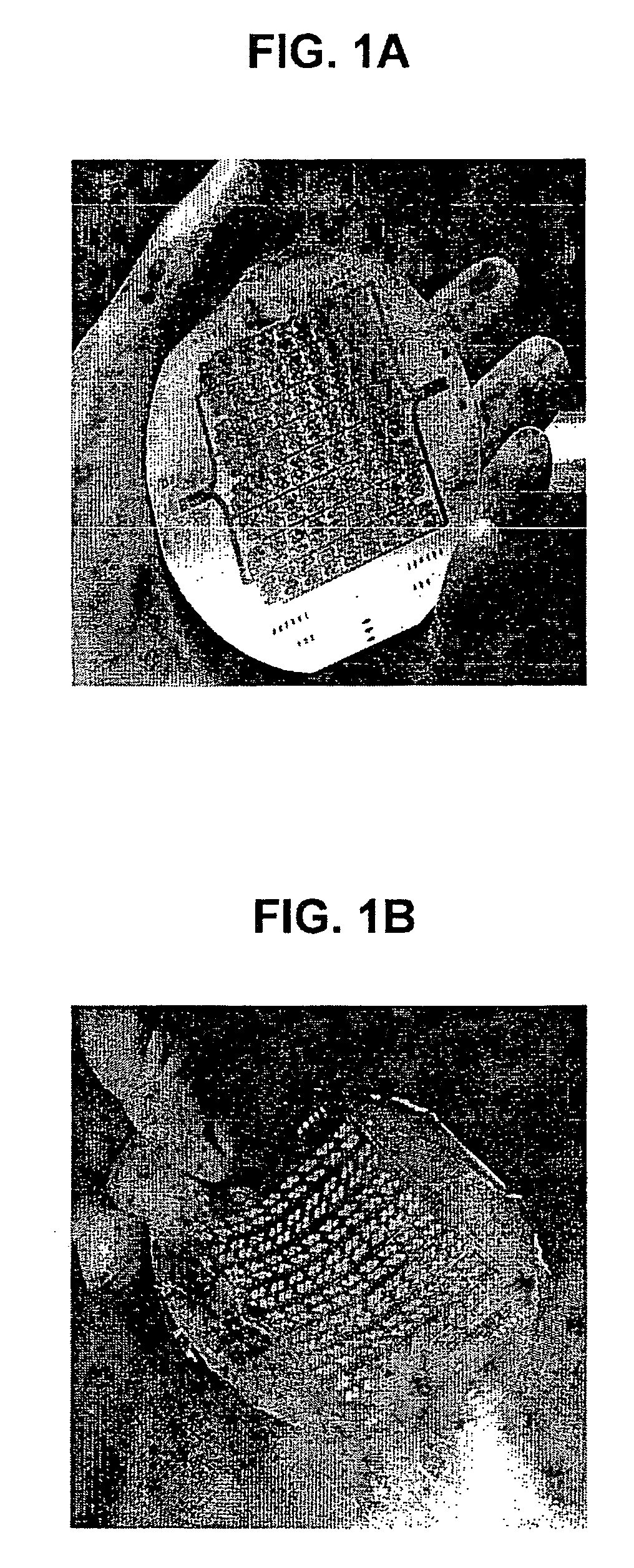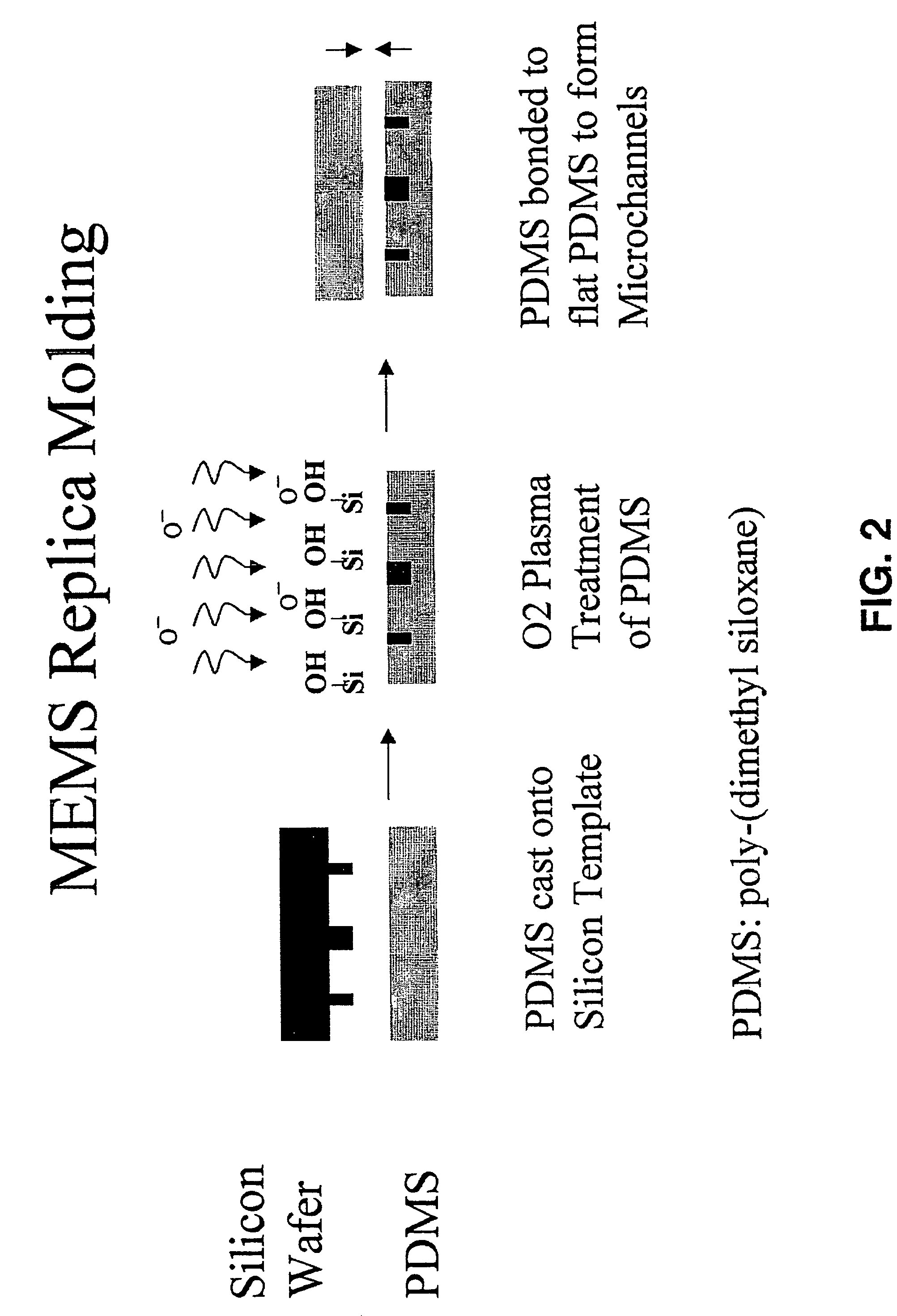Three dimensional construct for the design and fabrication of physiological fluidic networks
a fluid network and three-dimensional technology, applied in the field of tissue engineering, design and fabrication of biological constructs, can solve the problems of limited three-dimensional integration of the distribution of the vessel network size, the inability to build the elements on the size scale of the capillary, and the limitation of the available space for small blood vessels, so as to increase the lateral dimension. the effect of the number
- Summary
- Abstract
- Description
- Claims
- Application Information
AI Technical Summary
Benefits of technology
Problems solved by technology
Method used
Image
Examples
example 1
[0221]The most basic characteristic to evaluate in determining whether a fluidic network is desirable for the design of vasculature in a tissue engineered construct is the number of small vessels provided by the network (e.g., diameter less than about 20 microns). Most mass transfer from the blood to the tissue occurs through small vessels, and a large portion of the network's overall resistance lies in the small vessels. Thus, a network with too few small vessels will generally not provide adequate mass transfer to sustain the tissue, and will have too high a resistance to exist in the cardiovascular system. One advantage of the design method provided by the present invention is that networks can have vessel populations matching those of physiological systems, allowing the design of a true vasculature system. Using the diameter-defined Strahler ordering system (Jiang et al., Journal Of Applied Physiology 76 (2):882 (1994)), the number of vessels in a Hextak can be compared to physi...
PUM
| Property | Measurement | Unit |
|---|---|---|
| size distribution | aaaaa | aaaaa |
| diameter | aaaaa | aaaaa |
| diameter | aaaaa | aaaaa |
Abstract
Description
Claims
Application Information
 Login to View More
Login to View More - R&D
- Intellectual Property
- Life Sciences
- Materials
- Tech Scout
- Unparalleled Data Quality
- Higher Quality Content
- 60% Fewer Hallucinations
Browse by: Latest US Patents, China's latest patents, Technical Efficacy Thesaurus, Application Domain, Technology Topic, Popular Technical Reports.
© 2025 PatSnap. All rights reserved.Legal|Privacy policy|Modern Slavery Act Transparency Statement|Sitemap|About US| Contact US: help@patsnap.com



